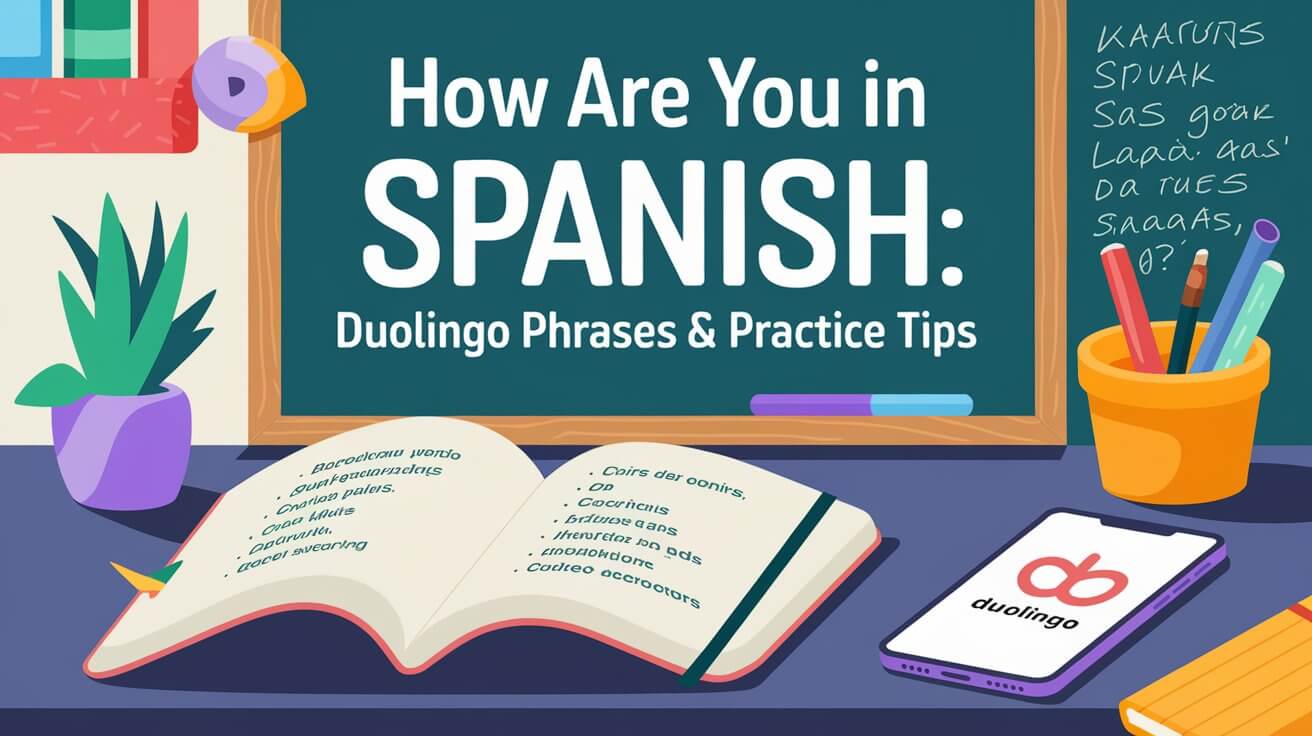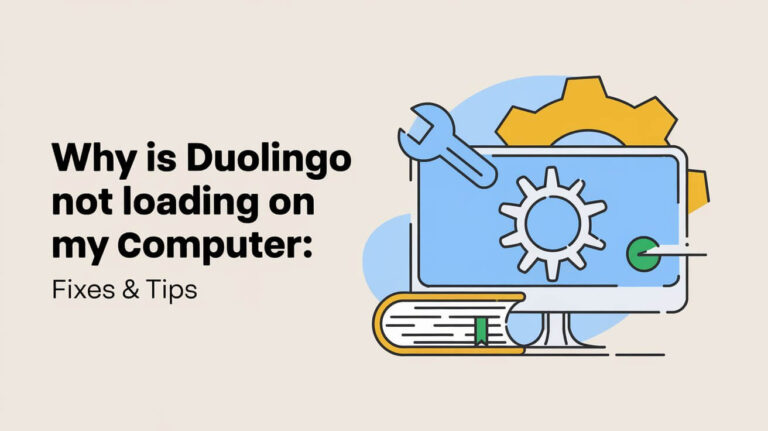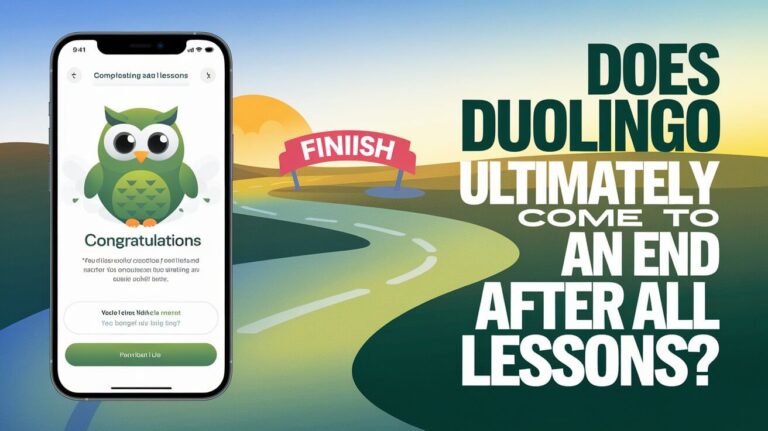Learning to greet others is key when starting a new language. Duolingo’s Spanish course makes it easy. The “Phrases” or “Common Phrases” module is the second skill. It teaches basic expressions to help you start speaking Spanish quickly.
Duolingo makes learning personal. It adjusts lessons based on your strengths and weaknesses. This means you get lessons that fit your needs, helping you learn at your own speed.
Key Takeaways
- Duolingo’s Spanish course includes a “Phrases” or “Common Phrases” module that teaches essential greetings and expressions.
- The app’s personalized learning approach ensures that the curriculum is tailored to individual learners’ needs and strengths.
- Mastering basic Spanish greetings is a crucial first step in building conversational abilities.
- Duolingo’s gamified learning experience keeps learners engaged and motivated throughout the language-learning journey.
- The app covers a wide range of vocabulary and phrases, including common household words and time-of-day expressions.
Essential Spanish Greetings on Duolingo
Duolingo’s Spanish course teaches the basics and easy spanish expressions. It helps learners with essential greetings for daily talks. You’ll learn from “hola” (hello) to “buenos días” (good morning) and “buenas noches” (good evening). This app gives you a good start for using polite language.
Morning and Evening Expressions
Knowing when to say “buenos días” (good morning), “buenas tardes” (good afternoon), and “buenas noches” (good evening) is key. Duolingo teaches you these differences. This knowledge helps you make a good impression when talking to native speakers.
Casual vs Formal Greetings
Duolingo shows you the difference between casual and formal greetings. You’ll learn when to use “hola” versus “buenos días” or “buenas tardes”. Knowing this helps you fit in with different social situations.
Basic Thank You Phrases
Learning to say thank you is important. Duolingo introduces “gracias” (thank you) and its variations. You’ll learn “muchas gracias” (thank you very much) and “de nada” (you’re welcome). These easy spanish expressions help you show respect and build rapport.
Duolingo’s Spanish course is a great start for learning greetings and polite phrases. It prepares you for various social situations. As you get better, you can improve your spanish language basics and communication skills.
How Are You in Spanish Duolingo
Duolingo is a top app for learning languages. It helps users get good at common Spanish phrases and conversational Spanish. It teaches you to say “How are you?” in Spanish, a key greeting for starting conversations.
The app teaches phrases like “¿Cómo estás?” (How are you?) and others. You learn through fun exercises and get feedback right away. This helps you get better at speaking Spanish fast.
Learning these basic phrases lets Duolingo users start talking, share how they’re doing, and answer when greeted. This basic skill is the start of becoming more fluent in Spanish.
“Duolingo has been an invaluable tool in helping me learn common Spanish phrases and build my conversational skills. The app’s interactive lessons and real-time feedback have been key to my progress.”
As you move on in Duolingo’s Spanish course, you’ll learn more common Spanish phrases and expressions. This expands your language skills for daily talks. Regular practice makes you more confident and fluent in Spanish.
Common Phrases Skill Tree Structure
The duolingo language app has a structured way to learn Spanish. The “Common Phrases” section is a key part of this. Users move through a series of nodes, each with lessons on useful phrases. They get virtual coins for right answers, unlocking new levels and improving their fluency score.
Lesson Progress System
Learning Spanish with Duolingo is fun and keeps you coming back. Each lesson is short, lasting 5-10 minutes. This makes it easy to fit into your busy schedule. As you progress, you’ll try different exercises like translating, listening, and speaking.
Skill Points and Achievements
Duolingo’s rewards, like “lingots” and achievements, keep you motivated. The app tracks your progress and asks you to practice weak areas. A study shows 34 hours of Duolingo is like a semester of college language courses. It proves the app’s effectiveness.
“Duolingo gamifies the learning process, making it fun and addictive.”
| Feature | Description |
|---|---|
| Skill Tree Structure | The Common Phrases section is part of a larger skill tree, with interconnected nodes containing various lessons. |
| Lesson Progress | Each lesson takes 5-10 minutes to complete, allowing for short, frequent practice sessions. |
| Reward System | Users earn virtual coins, “lingots,” and unlock achievements, motivating them to continue their language-learning journey. |
Spanish Time-of-Day Greetings Explained
Learning Spanish greetings is a fun journey for language learners. Duolingo, a popular app, helps users understand time-of-day greetings in Spanish. From buenos días in the morning to buenas noches in the evening, knowing these greetings is key for smooth communication.
In Spanish, tarde means both afternoon and early evening. Noche refers to the night and late evening. So, at 6:30 PM, you can say either buenas tardes or buenas noches. Duolingo teaches these expressions, helping learners feel confident in Spanish-speaking places.
Duolingo also teaches other important phrases. Sayings like ¿Cómo estás? (How are you?) and Gracias (Thank you) are part of the course. These phrases help learners start conversations and connect with Spanish speakers.
“Learning Spanish greetings is the gateway to a world of cultural immersion and authentic communication.”
Whether you’re new to Spanish or improving your skills, Duolingo makes learning time-of-day greetings easy. This way, you can explore the Spanish language with confidence and fluency.
Interactive Learning Methods in Duolingo Spanish
Duolingo uses many interactive ways to help beginners learn Spanish. The app’s exercises let users practice the language. This helps them learn important words and grammar rules.
Users can try out common phrases like “hay” (there is/are) and “me gustaría” (I would like). Duolingo also has activities that feel like real conversations. This makes learning fun and engaging.
Pronunciation Tips
Duolingo gives tips to improve speaking skills. Users can listen to words and sentences. This helps them get the Spanish sounds and rhythms right.
By practicing, beginners become more confident in speaking. They learn how to speak Spanish like a native.
Real-time Feedback
Duolingo’s Spanish lessons are known for their real-time feedback. As users do exercises, the app corrects their mistakes. This helps them learn faster and more accurately.
This feedback makes learning Spanish more effective. It helps beginners improve quickly and enjoy the process.
Answers To Common Questions
How are you in Spanish on Duolingo?
Duolingo’s Spanish course teaches you basic greetings. You’ll learn “hola” (hello), “adiós” (goodbye), and more. It also covers “gracias” (thank you) and “mucho gusto” (nice to meet you).
What are the common Spanish phrases taught on Duolingo?
Duolingo focuses on everyday phrases. You’ll learn “¿Cómo estás?” (How are you?) and its variations. Interactive exercises and instant feedback help you get better.
How does Duolingo structure its Spanish course?
Duolingo’s Spanish course uses a skill tree. You earn coins for correct answers and unlock new levels. Your fluency score increases, making learning fun and engaging.
How does Duolingo explain Spanish time-of-day greetings?
Duolingo breaks down Spanish time-of-day greetings. “Tarde” means afternoon and early evening, while “noche” means night and late evening. At 6:30 pm, both “buenas tardes” and “buenas noches” are okay.
What interactive learning methods does Duolingo offer for Spanish?
Duolingo uses interactive methods for Spanish. You get practice exercises and feedback right away. It also offers tips on pronunciation and adapts to your learning speed.







